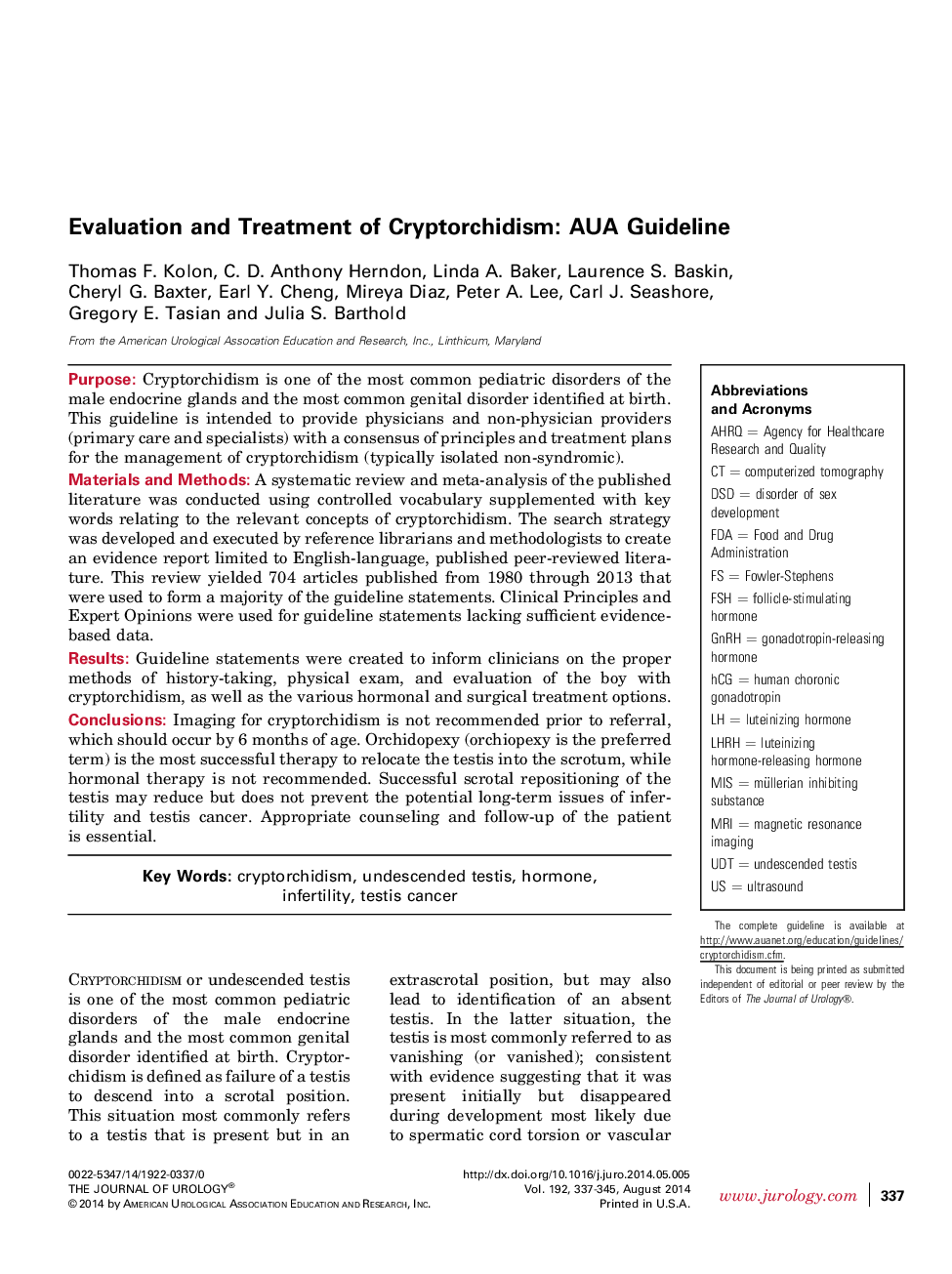| Article ID | Journal | Published Year | Pages | File Type |
|---|---|---|---|---|
| 3861050 | The Journal of Urology | 2014 | 9 Pages |
PurposeCryptorchidism is one of the most common pediatric disorders of the male endocrine glands and the most common genital disorder identified at birth. This guideline is intended to provide physicians and non-physician providers (primary care and specialists) with a consensus of principles and treatment plans for the management of cryptorchidism (typically isolated non-syndromic).Materials and MethodsA systematic review and meta-analysis of the published literature was conducted using controlled vocabulary supplemented with key words relating to the relevant concepts of cryptorchidism. The search strategy was developed and executed by reference librarians and methodologists to create an evidence report limited to English-language, published peer-reviewed literature. This review yielded 704 articles published from 1980 through 2013 that were used to form a majority of the guideline statements. Clinical Principles and Expert Opinions were used for guideline statements lacking sufficient evidence-based data.ResultsGuideline statements were created to inform clinicians on the proper methods of history-taking, physical exam, and evaluation of the boy with cryptorchidism, as well as the various hormonal and surgical treatment options.ConclusionsImaging for cryptorchidism is not recommended prior to referral, which should occur by 6 months of age. Orchidopexy (orchiopexy is the preferred term) is the most successful therapy to relocate the testis into the scrotum, while hormonal therapy is not recommended. Successful scrotal repositioning of the testis may reduce but does not prevent the potential long-term issues of infertility and testis cancer. Appropriate counseling and follow-up of the patient is essential.
